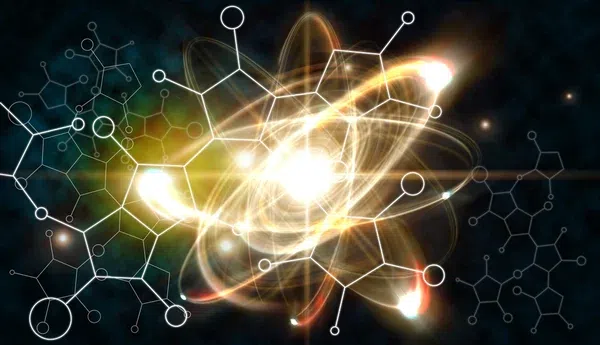
The History of Nuclear Power
The journey of nuclear energy began with the discovery of radioactivity in the late 19th century by scientists like Henri Becquerel and Marie Curie. The groundbreaking work of Albert Einstein and Enrico Fermi in the early 20th century paved the way for nuclear fission, where splitting atoms releases vast amounts of energy.
The first practical application came during World War II with the development of nuclear weapons, culminating in the Manhattan Project. Post-war efforts shifted focus to peaceful uses of nuclear technology. The world's first nuclear power plant, Obninsk in Russia, began operations in 1954, marking the start of civilian nuclear energy.
The Present Status of Nuclear Energy
Today, nuclear power accounts for about 10% of global electricity production. Countries like the United States, France, China, and Russia are major players in the nuclear industry. Over 400 reactors operate worldwide, with several under construction, especially in developing nations seeking cleaner energy alternatives.
Key nuclear partnerships and organizations include:
- International Atomic Energy Agency (IAEA): Promotes safe and peaceful use of nuclear technology.
- World Nuclear Association (WNA): Advocates for nuclear energy as part of a sustainable energy mix.
Major companies in the industry:
- Westinghouse Electric Company (USA)
- Rosatom (Russia)
- EDF Energy (France)
- China National Nuclear Corporation (CNNC)
Types of Nuclear Reactors
Nuclear reactors are classified based on the type of fuel, moderator, and coolant used. Common types include:
- Pressurized Water Reactors (PWRs) - Most widely used.
- Boiling Water Reactors (BWRs) - Simpler design but less common.
- Fast Breeder Reactors (FBRs) - Produce more fuel than they consume.
- Small Modular Reactors (SMRs) - Emerging technology with flexible deployment options.
Advantages of Nuclear Energy
- Low Greenhouse Gas Emissions: Nuclear power is one of the cleanest energy sources, emitting almost zero carbon dioxide during operation.
- High Energy Density: A small amount of uranium produces massive amounts of energy.
- Reliable Power Supply: Unlike solar and wind, nuclear plants provide a consistent energy output.
- Energy Security: Reduces dependence on fossil fuel imports.
Disadvantages of Nuclear Energy
- High Initial Costs: Building nuclear plants requires substantial investment.
- Waste Management: Handling radioactive waste safely is a significant challenge.
- Safety Concerns: Accidents like Chernobyl (1986) and Fukushima (2011) have raised concerns about nuclear safety.
- Public Perception: Negative perceptions and political opposition hinder adoption.
Notable Nuclear Accidents
- Chernobyl (1986): A catastrophic reactor explosion in Ukraine, causing widespread radioactive contamination.
- Fukushima Daiichi (2011): Triggered by a tsunami, it led to reactor meltdowns and major evacuations in Japan.
- Three Mile Island (1979): A partial meltdown in the USA, leading to increased regulatory scrutiny.
These events emphasize the need for stringent safety measures and technological advancements.
Job Opportunities in Nuclear Energy
The nuclear sector offers diverse roles, including:
- Nuclear Engineers: Design and maintain reactors.
- Quality Assurance Professionals: Ensure safety and compliance.
- Welding Inspectors: Oversee critical components of reactors.
- Environmental Scientists: Assess and mitigate impacts.
- Policy Advisors: Shape regulations and strategies.
With the global push for clean energy, nuclear jobs are expanding in both established and emerging markets.
The Future of Nuclear Energy
The future of nuclear energy hinges on innovation and collaboration. Promising trends include:
- Development of SMRs: Small Modular Reactors are cost-effective, scalable, and safer.
- Fusion Power: Projects like ITER aim to harness fusion, replicating the sun’s energy generation process.
- Nuclear-Hydrogen Synergy: Nuclear reactors could be used to produce clean hydrogen fuel.
- Advanced Safety Features: New reactor designs focus on passive safety systems to prevent meltdowns.
Countries worldwide are reevaluating nuclear energy’s role in achieving net-zero carbon goals. As renewable energy sources like solar and wind face intermittency challenges, nuclear power offers a stable backbone for the energy grid.
Conclusion
Nuclear power is a double-edged sword—offering immense potential for clean energy while posing significant challenges. Its history is a testament to human ingenuity, its present showcases technological resilience, and its future promises a blend of sustainability and innovation. With the right investments, regulations, and public support, nuclear energy can play a pivotal role in the global transition to a greener, more sustainable future.
What are your thoughts on nuclear power? Share your opinions and insights in the comments below!
4o